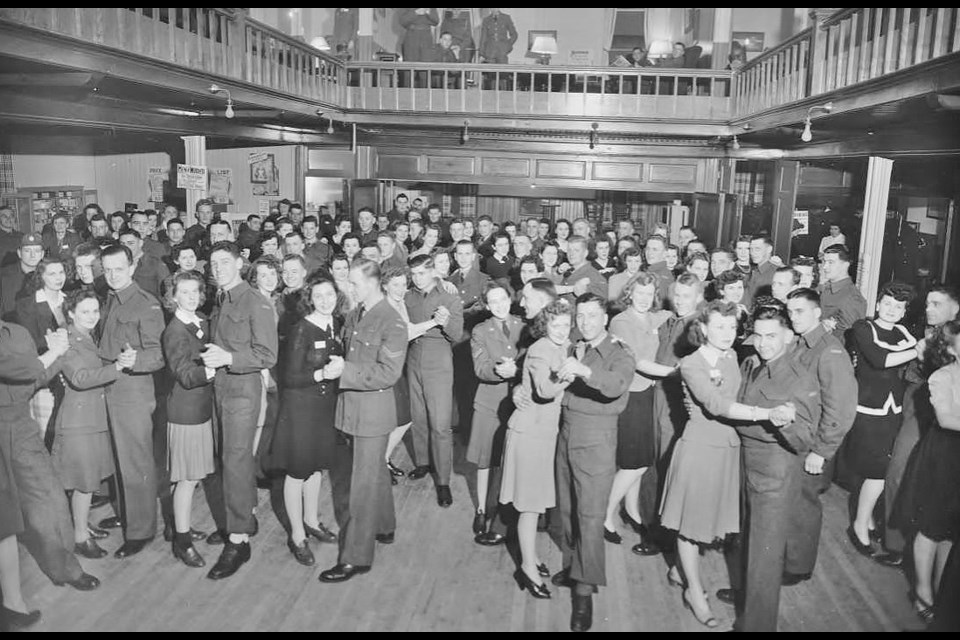Postcard Memories is a weekly series of historic postcard views and photos submitted by Marcel Rousseau.
Some were previously published by the Orillia Museum of Art and History and in the book Postcard Memories Orillia.
Starting last Saturday, and for the following two Saturdays, Postcard Memories will have a Remembrance Day theme
The Maple Leaf Club opened on June 1, 1942 in the St. James' Church Sunday School building.
The Orillia Citizens War Committee, with over 200 women and girls working in shifts, acted as hostesses to the men and women stationed at the Basic Training Camp 26 that had opened on Brant Street near what is now Park Street.
The “Hostess House” as the club was commonly called, was open seven days a week and became the most active place in Orillia during the war. Dances where held every Tuesday and Thursday evening from 8:00 to 10:30 in the main hall. 250 ladies where registered to act as junior hostesses for the dances.
Strict rules were in place and the hostesses were instructed to: “Look your best and wear dresses, no slacks or shorts. Change partners after every dance. Do not leave the club with a soldier nor should you leave the club until the dance is over. Smoking is permitted only in the ladies rest room.”
Dancing music was often provided by the soldiers themselves and most everyone in the hall enjoyed the use of the dance floor. Every Sunday evening a sing-song was held led by local singers, Mr. Brain, Sgt. Cowan, Mr. A. Anderson and many others. Some of the pianists taking turns were Mr. Murphy, Mrs. Caldwell, Mrs. Glover and Mr. Varley.
Shortly after the club opened, an annex was opened for women in uniform on the east side of the hall. Two large rooms were furnished with a piano, writing tables and a sewing machine for the ladies.
Near the entrance to the hall was an information desk and a mend-it corner with several sewing machines provided by the volunteers to keep the soldiers' garments in repair.
Mrs. Robert Swinton, director of the organization, did a marvelous job organizing her loyal staff to welcome and cater to the many men and women in uniform at Basic Training Camp No. 26.
